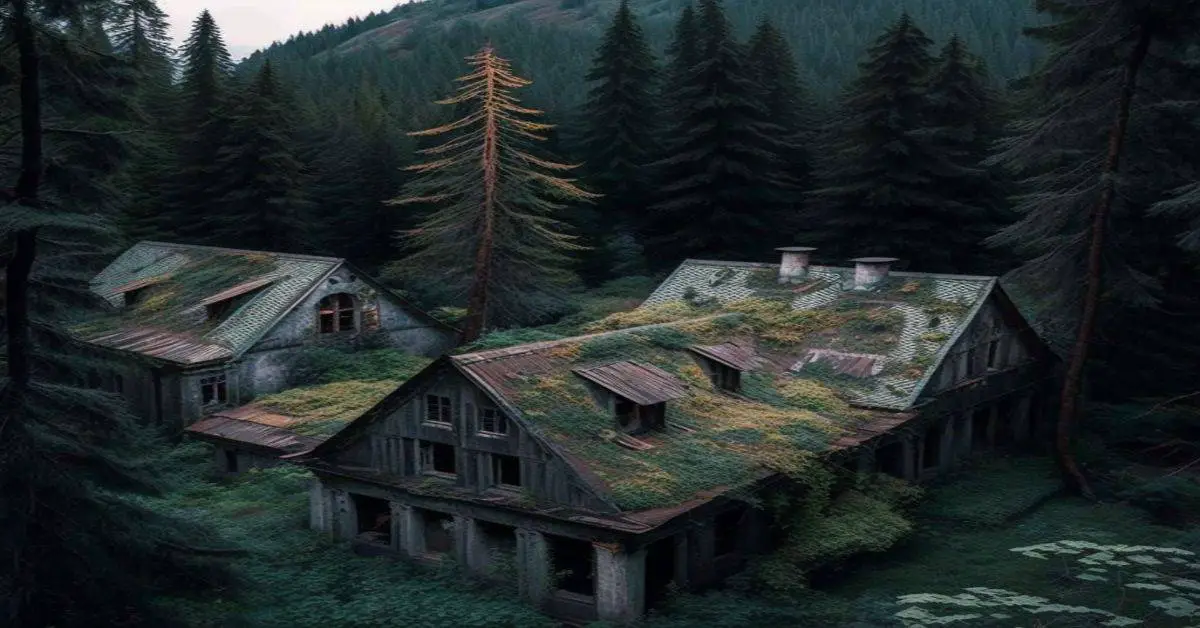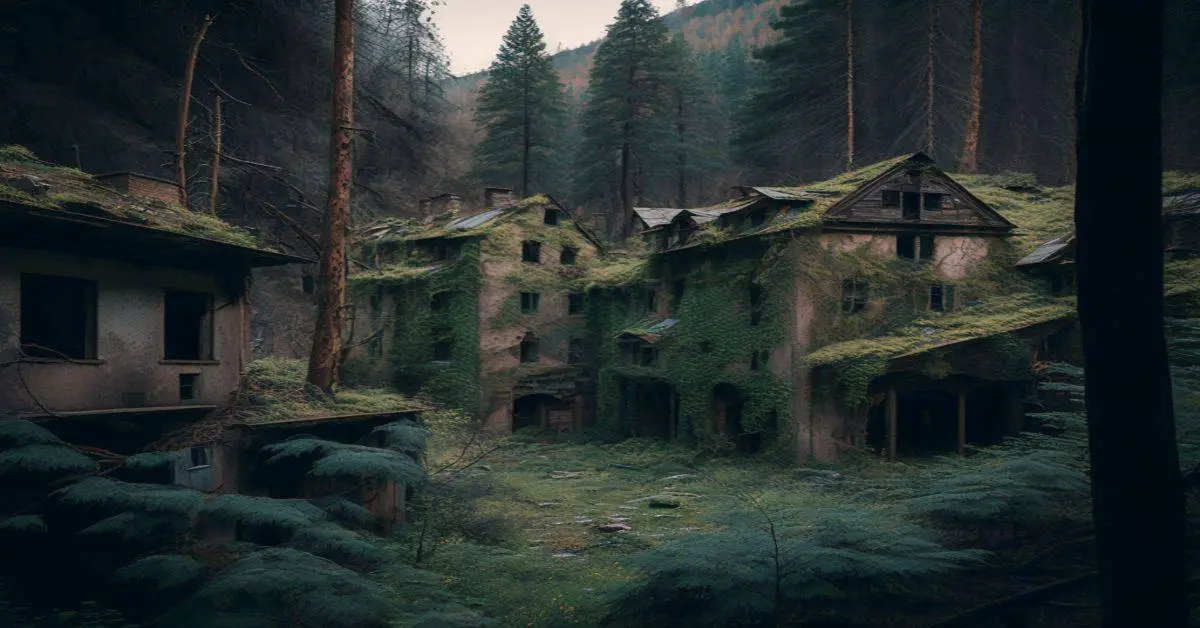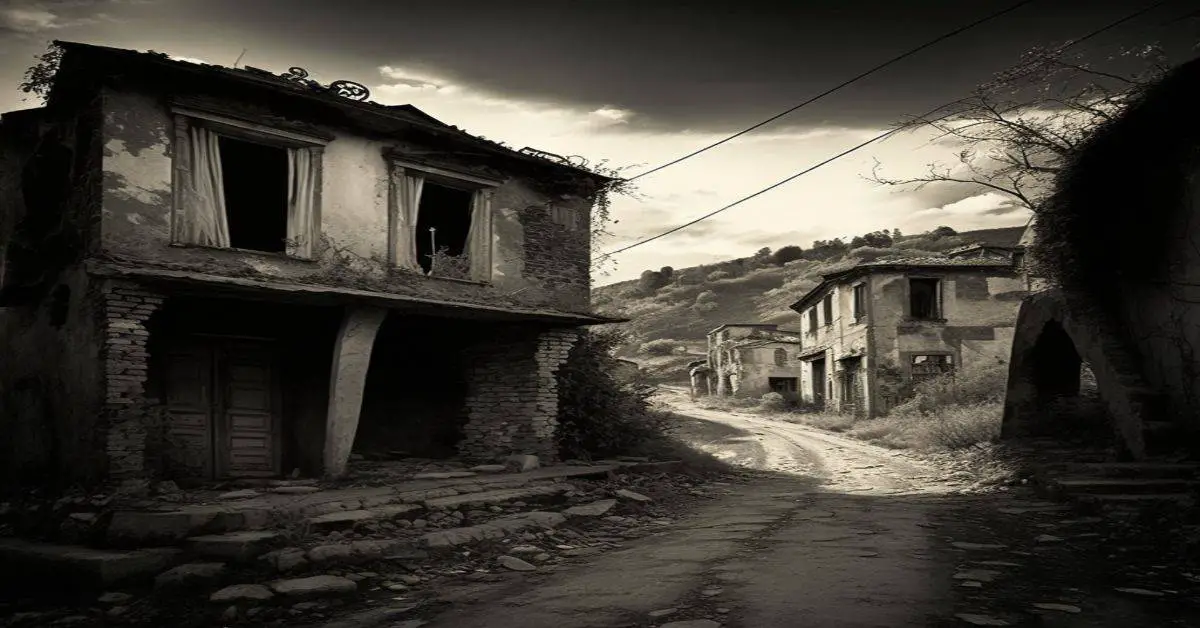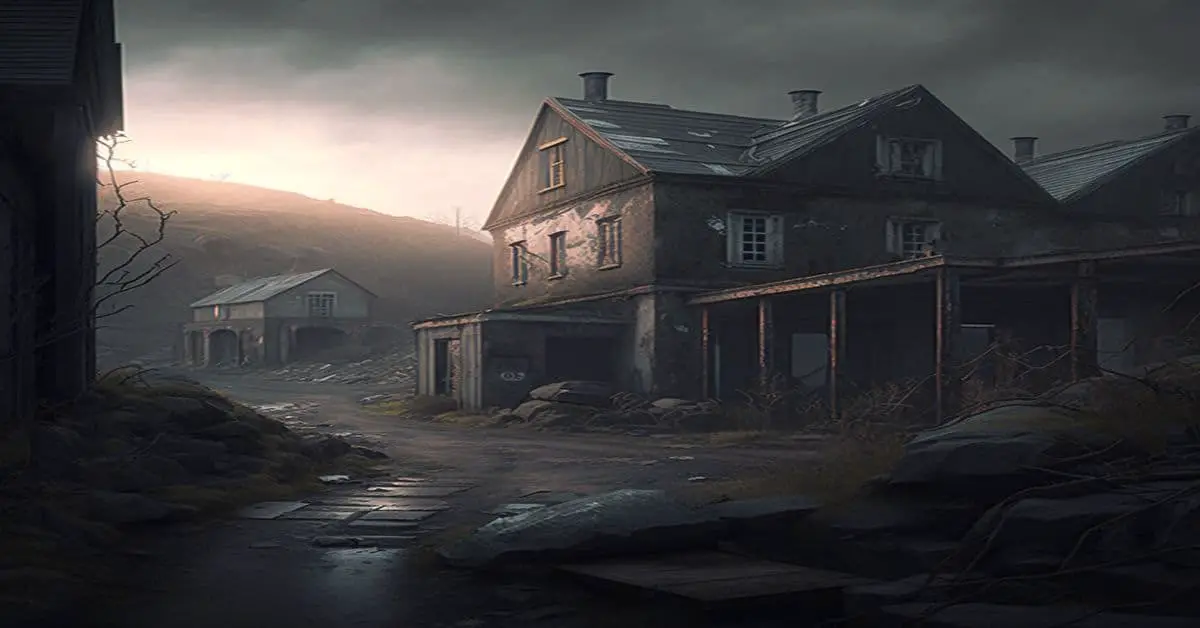What Is The Biggest Ghost Town In America?
Rhyolite, Nevada These days, Rhyolite, which sits at the eastern edge of Fatality Valley 120 miles northwest of Las Vegas, is a true treasure of a ghost town if only a couple of frameworks are still intact.
Why Is Ghost Town Called Ghost Town?
A town commonly becomes a ghost town since the financial task that sustained it has fallen short or resulted from all-natural or human-caused calamities such as floods, long-term dry spells, federal government activities, unchecked lawlessness, war, air pollution, or nuclear calamities.
What Is The Biggest Ghost Town?
Ordos Kangbashi, China, is the world’s biggest ghost town It was developed to house 300,000 people, but only 70,000 people moved right into the city. Ultimately, those people started to flow out, also.
Goosebumps, eerie feelings, strange noises, feels like you are being followed?
Feel free to explore any of these ghost towns around America, many with some chilling pasts.
Check out our Ghost Town Adventuring Gear page for our top recommendations of items to take with you on your exploring adventures.
Calico, California
Calico is a ghost and former mining town in San Bernardino County, California, United States. Located in the Calico Mountains of the Mojave Desert region of Southern California, it was founded in 1881 as a silver mining town.
Today, it has been converted into a county park named Calico Ghost Town. Located off Interstate 15, it lies 3 miles (4.8 km) from Barstow and 3 miles from Yermo.
Giant letters spelling CALICO can be seen on the Calico Peaks behind the ghost town from the freeway. Walter Knott purchased Calico in the 1950s, architecturally restoring all but the five remaining original buildings to look as they did in the 1880s. Calico received California Historical Landmark #782 and, in 2005, was proclaimed by then-Governor Arnold Schwarzenegger to be California’s Silver Rush Ghost Town.
In 1881 four prospectors were leaving Grapevine Station (present-day Barstow, California) for a mountain peak to the northeast. Describing the peak as “calico-colored,” the peak, the mountain range to which it belonged, and the town that followed were all called Calico.
The four prospectors discovered silver in the mountain and opened the Silver King Mine, California’s largest silver producer, in the mid-1880s. A post office was established in early 1882, and the Calico Print, a weekly newspaper, started publishing.
The town soon supported three hotels, five general stores, a meat market, bars, brothels, and three restaurants and boarding houses. The county established a school district and a voting precinct. The town also had a deputy sheriff, two constables, two lawyers and a justice of the peace, five commissioners, and two doctors.
There was also a Wells Fargo office and a telephone and telegraph service. At its height of silver production between 1883 and 1885, Calico had over 500 mines and a population of 1,200 people. Local badmen were buried in the Boot Hill cemetery.
Rhyolite, Nevada
Rhyolite is a ghost town in Nye County, in the U.S. state of Nevada. It is in the Bullfrog Hills, about 120 miles (190 km) northwest of Las Vegas, near the eastern edge of Death Valley. The town began in early 1905 as one of several mining camps that sprang up after a prospecting discovery in the surrounding hills.
During an ensuing gold rush, thousands of gold-seekers, developers, miners, and service providers flocked to the Bullfrog Mining District. Many settled in Rhyolite, which lay in a sheltered desert basin near the region’s biggest producer, the Montgomery Shoshone Mine.
How Far Is Rhyolite From Las Vegas?
Rhyolite goes to the northern end of the Amargosa Desert in the Nye Area in the U.S. state of Nevada. Nestled in the Bullfrog Hills, 120 miles (190 km) northwest of Las Las vega, it has to do 60 miles (97 km) south of Goldfield and 90 miles (140 kilometers) south of Tonopah.
Rhyolite declined almost as rapidly as it rose. After the richest ore was exhausted, production fell. The 1906 San Francisco earthquake and the financial panic of 1907 made it more difficult to raise development capital.
In 1908, investors in the Montgomery Shoshone Mine, concerned that it was overvalued, ordered an independent study. When the study’s findings proved unfavorable, the company’s stock value crashed, further restricting funding.
By the end of 1910, the mine was operating at a loss, and it closed in 1911. By this time, many out-of-work miners had moved elsewhere, and Rhyolite’s population dropped below 1,000. By 1920, it was close to zero.
St. Elmo, Colorado
St. Elmo is a ghost town in Chaffee County, Colorado, United States. Founded in 1880, St. Elmo lies in the heart of the Sawatch Range, 20 miles (32 km) southwest of Buena Vista, and sits at an elevation of 9,961 feet (3,036 m).
Nearly 2,000 people settled in this town when mining for gold and silver started. The mining industry started to decline in the early 1920s, and in 1922 the railroad discontinued service. The community is listed on the National Register of Historic Places as the St. Elmo Historic District. It is one of Colorado’s best-preserved ghost towns.
St. Elmo was originally named Forest City but was later changed because of the many towns with the same name. The name St. Elmo was chosen by Griffith Evans, one of the founding fathers, who was reading a novel with the same title.
The town peaked in the 1890s when it included a telegraph office, general store, town hall, 5 hotels, saloons, dancing halls, a newspaper office, and a schoolhouse. The Denver, South Park, and Pacific Railroad line ran through St. Elmo.
There were 150 patented mine claims within the area. Most people who lived in St. Elmo worked at the Mary Murphy, Teresa C., The Molly, or the Pioneer Mines. The Mary Murphy Mine was the area’s largest and most successful mine.
The Mary Murphy Mine recovered over $60,000,000 worth of gold while operating. While the other mines eventually shut down, the Mary Murphy Mine continued to operate until the railroad was abandoned in 1922.
Terlingua, Texas
Terlingua (/t”r’l””gw”/ t”r-LING-gwa) is a mining district and census-designated place (CDP) in southwestern Brewster County, Texas, United States.
It is located near the Rio Grande, Lajitas, and Study Butte, Texas, and the Mexican village of Santa Elena. The discovery of cinnabar, from which the metal mercury is extracted, in the mid-1880s brought miners to the area, creating a city of 2,000 people.
The only remnants of the mining days are a ghost town of the Howard Perry-owned Chisos Mining Company and several nearby capped and abandoned mines, most notably the California Hill, the Rainbow, the 248, and the Study Butte mines. The mineral terlinguaite was first found in the vicinity of California Hill.
According to the historian Kenneth Baxter Ragsdale, “Facts concerning the discovery of cinnabar in the Terlingua area are so shrouded in legend and fabrication that it is impossible to cite the date and location of the first quicksilver recovery.” The cinnabar was known to Native Americans, who supposedly used its brilliant red color for pictographs.
Bodie, California
Bodie (/’bo”di”/ BOH-dee) is a ghost town in the Bodie Hills east of the Sierra Nevada mountain range in Mono County, California, United States, about 75 miles (121 km) southeast of Lake Tahoe. It became a boomtown in 1876, and after discovering a profitable line of gold in the following years, it suddenly attracted several thousand residents. It is located 12 mi (19 km) east-southeast of Bridgeport, at an elevation of 8379 ft (2554 m). The U.S. Department of the Interior recognizes the designated Bodie Historic District as a National Historic Landmark.
Why Is Bodie a Ghost Town?
In 1917, the Bodie Railway was abandoned, and its iron tracks were junked. The last mine was enclosed in 1942 because Battle Manufacturing Board order L-208 closed down all unimportant gold mines in the United States throughout Globe War II. Mining never ever returned after the battle. Bodie was first referred to as a “ghost town” in 1915.
Also registered as a California Historical Landmark, the ghost town was officially established as Bodie State Historic Park in 1962. It receives about 200,000 visitors yearly. Since 2012, Bodie has been administered by the Bodie Foundation, which uses the tagline Protecting Bodie’s Future by Preserving Its Past.
Bodie began as a mining camp of little note following the discovery of gold in 1859 by a group of prospectors, including W. S. Bodey. Bodey perished in a blizzard the following November while making a supply trip to Monoville (near present-day Mono City, California), never seeing the rise of the town named after him.
According to area pioneer Judge J. G. McClinton, the district’s name was changed from “Bodey,” “Body,” and a few other phonetic variations to “Bodie,” after a painter in the nearby boomtown of Aurora, lettered a sign “Bodie Stables.”
South Pass City, Wyoming
South Pass City is an unincorporated community in Fremont County, Wyoming, United States. It is located 2 miles (3 km) south of the intersection of highways 28 and 131. A former station on the Oregon Trail, it became a ghost town after later gold mines were closed. The entire community is listed on the National Register of Historic Places. The closest town is Atlantic City, Wyoming. Some people have moved back in.
By the end of the 20th century, steps were being taken to renew the community and to develop it as a historic site for destination tourism. The community in the early 21st century consists of two areas: South Pass City, in which a handful of residents live, and South Pass City State Historic Site, which preserves more than 30 historic structures dating from the city’s heyday in the 1860s and 1870s.
In 1970, the community was added to the National Register of Historic Places. The town has been extensively documented by the Historic American Buildings Survey (HABS) in drawings and in photographs by HABS photographer Jack Boucher. The road west out of South Pass City intersects with WYO 28 two miles (3 km) west of town; Wyo. 28 intersects with US 287 thirty-five miles north of that intersection.
Cahaba, Alabama
Cahaba, also spelled Cahawba, was Alabama’s first permanent state capital from 1820 to 1825 and the county seat of Dallas County, Alabama, until 1866. It suffered a major flood in 1865, and the state legislature moved the county seat to Selma, which was better situated.
The former settlement is now a ghost town and state historic site. The site is located southwest of Selma, at the confluence of the Alabama and Cahaba rivers, which made it prone to seasonal flooding.
Cahaba’s low elevation at the confluence of two large rivers resulted in seasonal flooding and a reputation for having an unhealthy atmosphere. A major flood struck the town in 1825, causing a portion of the statehouse to collapse.
People opposed to the capital’s location at Cahaba used this as an argument for moving the capital to Tuscaloosa, which was approved by the legislature in January 1826.
Although the area is no longer inhabited, the Alabama Historical Commission maintains Cahaba as a state historic and important archaeological site.
It was added to the National Register of Historic Places in 1973. Visitors to this park can still see many abandoned streets, cemeteries, and ruins of this former state capital and county seat.
Kennecott, Alaska
In the summer of 1900, two prospectors, “Tarantula” Jack Smith and Clarence L. Warner, a group of prospectors associated with the McClellan party, spotted “a green patch far above them in an improbable location for a grass-green meadow.”
The green turned out to be malachite, located with chalcocite (aka “copper glance”), and the location of the Bonanza claim. A few days later, Arthur Coe Spencer, a U.S. Geological Survey geologist, independently found chalcocite at the same location.
Kennecott, also known as Kennicott and Kennecott Mines, is an abandoned mining camp in the Valdez-Cordova Census Area in the U.S. state of Alaska that was the center of activity for several copper mines. It is located beside the Kennicott Glacier, northeast of Valdez, inside Wrangell-St. Elias National Park and Preserve.
The camp and mines are now a National Historic Landmark District administered by the National Park Service. It was declared a National Historic Landmark in 1986.
Nevada City, Montana
Nevada City /n’ved’sti/ (n-VAY-d) is an unincorporated community in Madison County, Montana, United States. In the 1880s, it was one of the two major centers of Commerce in what was known as one of the “Richest Gold Strikes in the Rocky Mountain West”; it shared that role with its sister city Virginia City. Since the late 1990s, Nevada City has become a large residential area and one of Montana’s biggest tourist attractions.
Archaeological evidence found between the Music Hall and the Nevada City Hotel would indicate earlier than mining-era habitation, possibly by white hunters or trappers.
The earliest white hunters and trappers in the area had no conscious intention of establishing a city on the site because the existence of a city would have presumably destroyed their economic base, which was based on the harvesting of beaver.
Today, the town is managed by the Montana Heritage Commission, Department of Commerce, State of Montana. Businesses in the town are Alder Gulch Accommodations, Nevada City Hotel and Cabins, Just an Experience Bed and Breakfast, The Star Bakery, and the Nevada City Hotel Coffee Shop.
Some businesses are operational year-round, while others are operational during summer. The town has been restored as an outdoor history historical museum, linked by railroad to the Virginia City Historic District with numerous historic buildings, artifacts, and furnishings.
It is owned by the State of Montana and operated by the Montana Heritage Commission, with 108 historic buildings from various places around Montana, and 14 original Nevada City structures.
Virginia City, Montana
In May 1863, a group of prospectors were headed toward the Yellowstone River and instead came upon a party of the Crow tribe and was forced to return to Bannack. On May 26, 1863, Bill Fairweather and Henry Edgar discovered gold near Alder Creek.
The prospectors could not keep the site a secret and were followed on their return to the gold-bearing site. A mining district was set up in order to formulate rules about individual gold claims. On June 16, 1863, under “Verina,” the township was formed a mile south of the goldfields.
The name was intended to honor Varina Howell Davis, the first and only First Lady of the Confederate States of America during the American Civil War. Although in Union territory, Verina was founded by men whose loyalties were thoroughly Confederate.
Upon registration of the name, a Connecticut judge, G. G. Bissell, objected to their choice and recorded it as Virginia City.
Is Virginia City a Ghost Town?
The significant ghost town, Virginia City, Montana, is frozen in time. It is an incredibly well-maintained old west Victorian gold mining community just 20 miles west of Yellowstone National Park (90 miles by a roadway). Come rediscover Virginia City & Nevada City, Montana!
The Historic District of Virginia City and Nevada City is currently operated by the Montana Historical Commission and is Montana’s top state-owned tourist attraction. The Commission operates gold panning, a historic hotel and the longest continuously operating live summer theater company in the western United States.
Virginia City also has a Boothill Cemetery. The 2 ft 6 in (762 mm) narrow gauge Alder Gulch Short Line Railroad transports passengers by rail to the nearby ghost town of Nevada City, Montana, and back.
Glenrio, Texas – New Mexico
Glenrio, formerly Rock Island, is an unincorporated community in both Deaf Smith County, Texas, and Quay County, New Mexico, in the United States. Located on the former U.S. Route 66, the ghost town sits on the Texas-New Mexico state line. It includes the Glenrio Historic District, which was listed on the National Register of Historic Places in 2007.
Originally a railroad town, the village was renamed from Rock Island to Glenrio by the Rock Island and Pacific Railroad in 1908 and began receiving motorists on the dusty Ozark Trail in 1917. Its original structures were adobe buildings.
The circa-1910 Angel House was in New Mexico. The Ozark Trail was formed into U.S. Route 66 on November 11, 1926. By the 1930s, U.S. Route 66 in Texas was a paved two-lane road served locally by several filling stations, a restaurant, and a motel.
The road was widened in the 1950s. A Texaco station (1950) and a diner (Brownlee Diner/Little Juarez Café, 1952) were constructed in Texas using modern architectural art.
The town consists of the remains of the courtyard motel and related Texas Longhorn Café and Phillips 66 service station, the post office, a few other buildings, including the diner and adjacent Texaco service station, the old Route 66 roadbed, and the former roadbed of the Rock Island Railroad.
Their tracks were removed in the 1980s. A few homes still exist in Glenrio; the Joseph Brownlee House and an office in the Texas Longhorn Motel were the last to be occupied.
Portions of The Grapes of Wrath were filmed in Glenrio. An abandoned “Glenn Rio Motel” is depicted in the town of Radiator Springs in 2006’s animated film Cars, where the architectural design of Glenrio’s Little Juarez Café is used for a vacant, abandoned building that eventually becomes the Racing Museum.
Centralia, Pennsylvania
Centralia is a borough and near-ghost town in Columbia County, Pennsylvania, United States. Its population has dwindled from more than 1,000 residents in 1980 to 63 by 1990 to only seven in 2013—a result of the coal mine fire which has been burning beneath the borough since 1962.
Centralia, part of the Bloomsburg–Berwick metropolitan area, is the least-populated municipality in Pennsylvania. It is completely surrounded by Conyngham Township.
Many of the Native American tribes in what is now Columbia County sold the land that makes up Centralia to colonial agents in 1749 for the sum of five hundred pounds. In 1770, settlers surveyed and explored the land during the construction of the Reading Road, which stretched from Reading to Fort Augusta (present-day Sunbury).
A large portion of Reading Road was developed later as Route 61, the main highway east into and south out of Centralia.
Centralia has been used as a model for many different ghost towns and physical manifestations of Hell. Prominent examples include Dean Koontz’s Strange Highways and David Wellington’s Vampire Zero. Centralia was the inspiration for the Silent Hill film adaptation.
The 1982 PBS documentary Centralia Mine Fire contains interviews with residents and relates the story of the mine fire. The 1987 film Made in the U.S.A. opens in Centralia and the surrounding coal region of Pennsylvania.
The 2007 documentary The Town That Was is about the town’s history and its current and former residents. Centralia had a segment entitled “City on Fire” on the Travel Channel television series America Declassified, aired in 2013. The Centralia story was explored in the documentary segment “Dying Embers” from public radio station WNYC’s RadioLab.
Thurmond, West Virginia
Thurmond is a town in Fayette County, West Virginia, United States, on the New River. The population was five at the 2010 census. During the heyday of coal mining in the New River Gorge, Thurmond was a prosperous town with several businesses and facilities for the Chesapeake and Ohio Railway.
The town was the filming location for John Sayles’ 1987 movie Matewan since it still possesses many characteristics of a 1920s Appalachian coal town. Thurmond was incorporated in 1900 and was most likely named for Captain W. D. Thurmond, who settled here in 1844.
He served in the Confederate Army and died in 1910 at age 90. Thurmond post office was established in 1888 and discontinued in 1995. The community remained small until Thomas G McKell of Glen Jean negotiated with the Chesapeake and Ohio Railroad for a crossing at Dunloup Creek in 1892.
The town once had a population of several hundred, which has dwindled to fewer than a dozen. The railroad depot is now a visitor center for New River Gorge National River.
Today, the National Park Service for the New River Gorge National River owns much of Thurmond. The C&O passenger railway depot in town was renovated in 1995 and now functions as a Park Service visitor center. The entire town is a designated historic district on the National Register of Historic Places.
In the residential portion of the town, housing types are standardized, with three or four basic types corresponding to different positions in the railroad hierarchy.
While lacking a street for much of its history, the commercial district boasted two hotels, two banks, and several other commercial buildings. The railroad station was built in 1888, while a rail yard and shops served the extensive branch line network which carried coal out of the hills.



